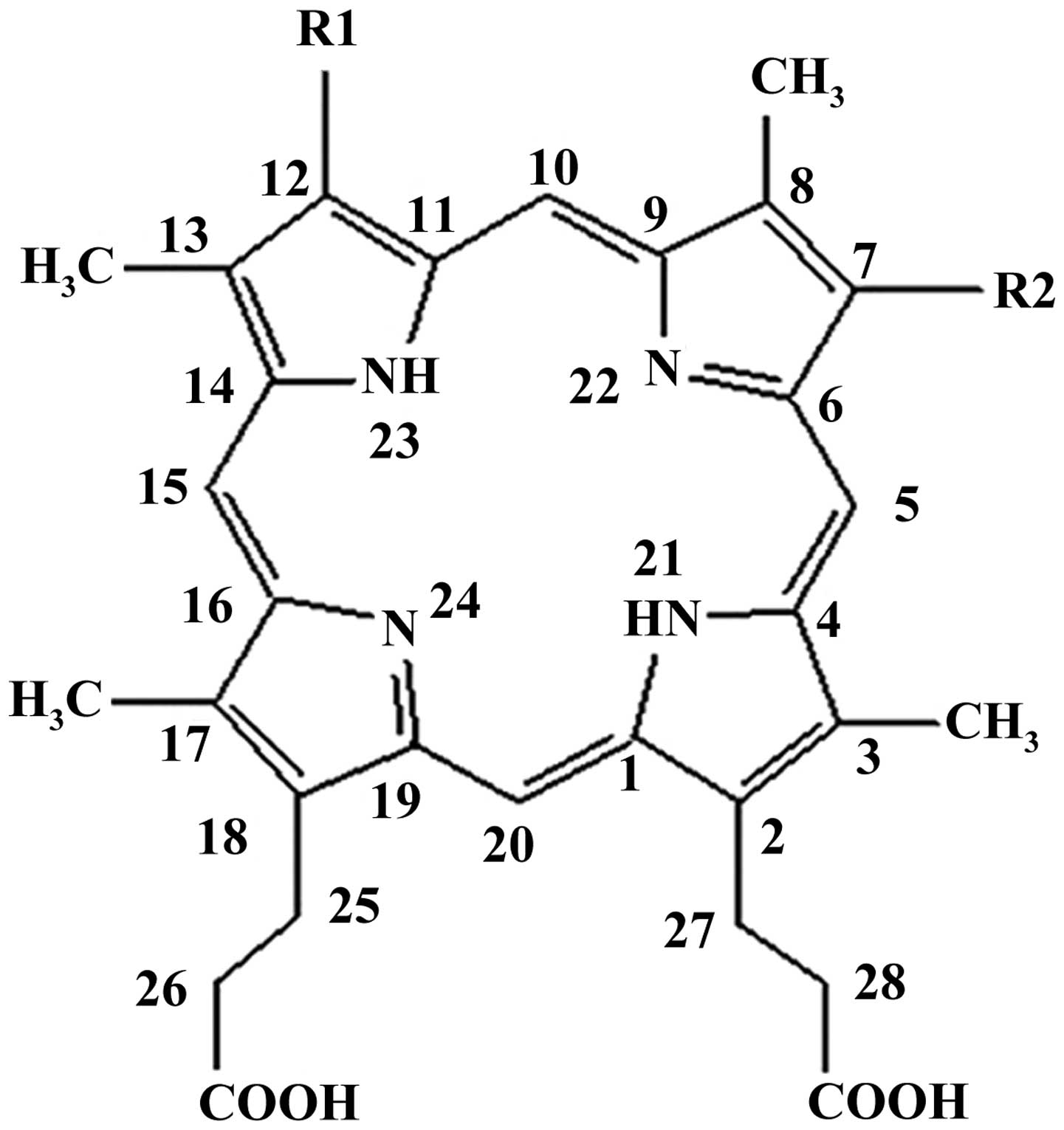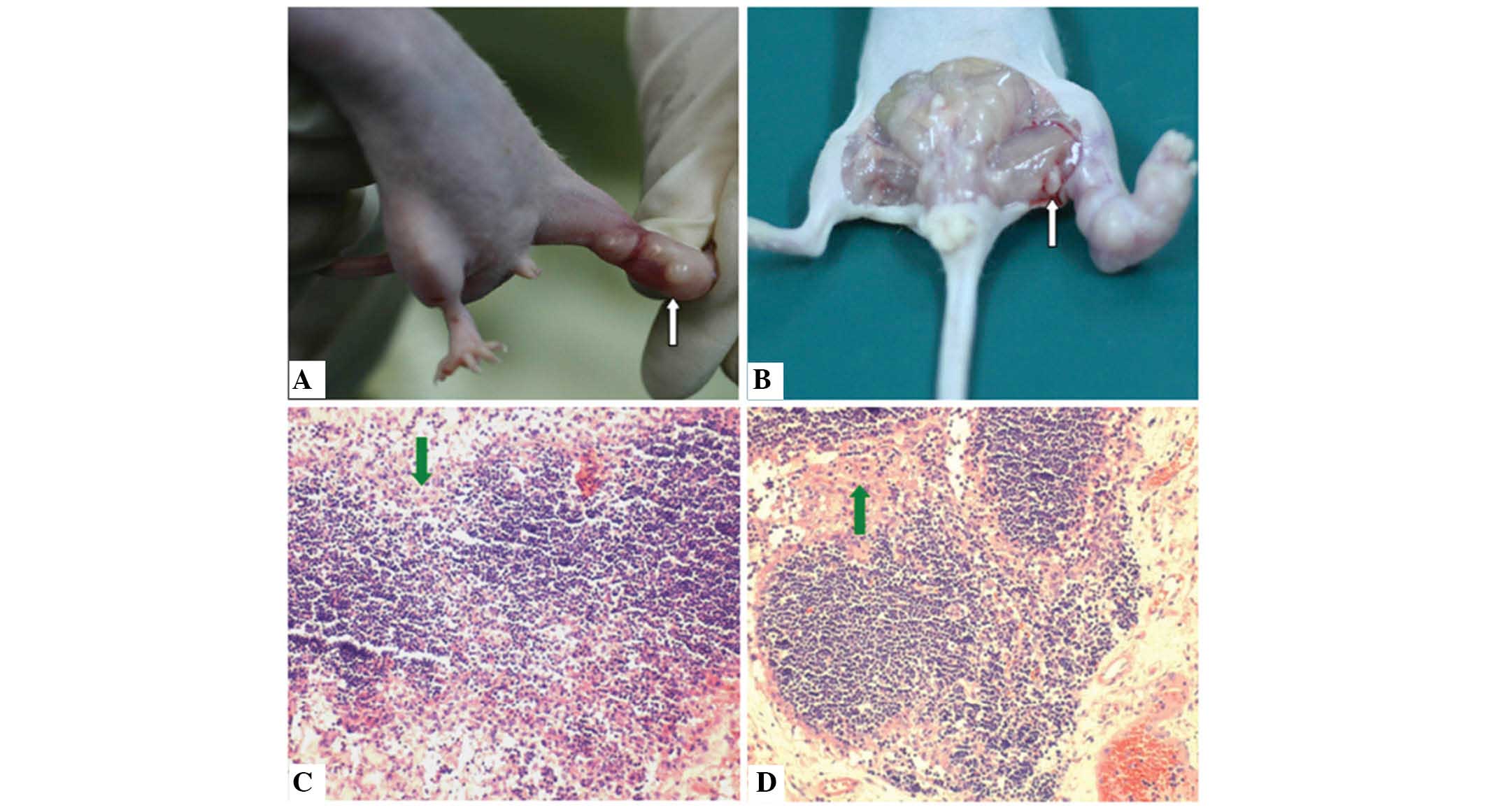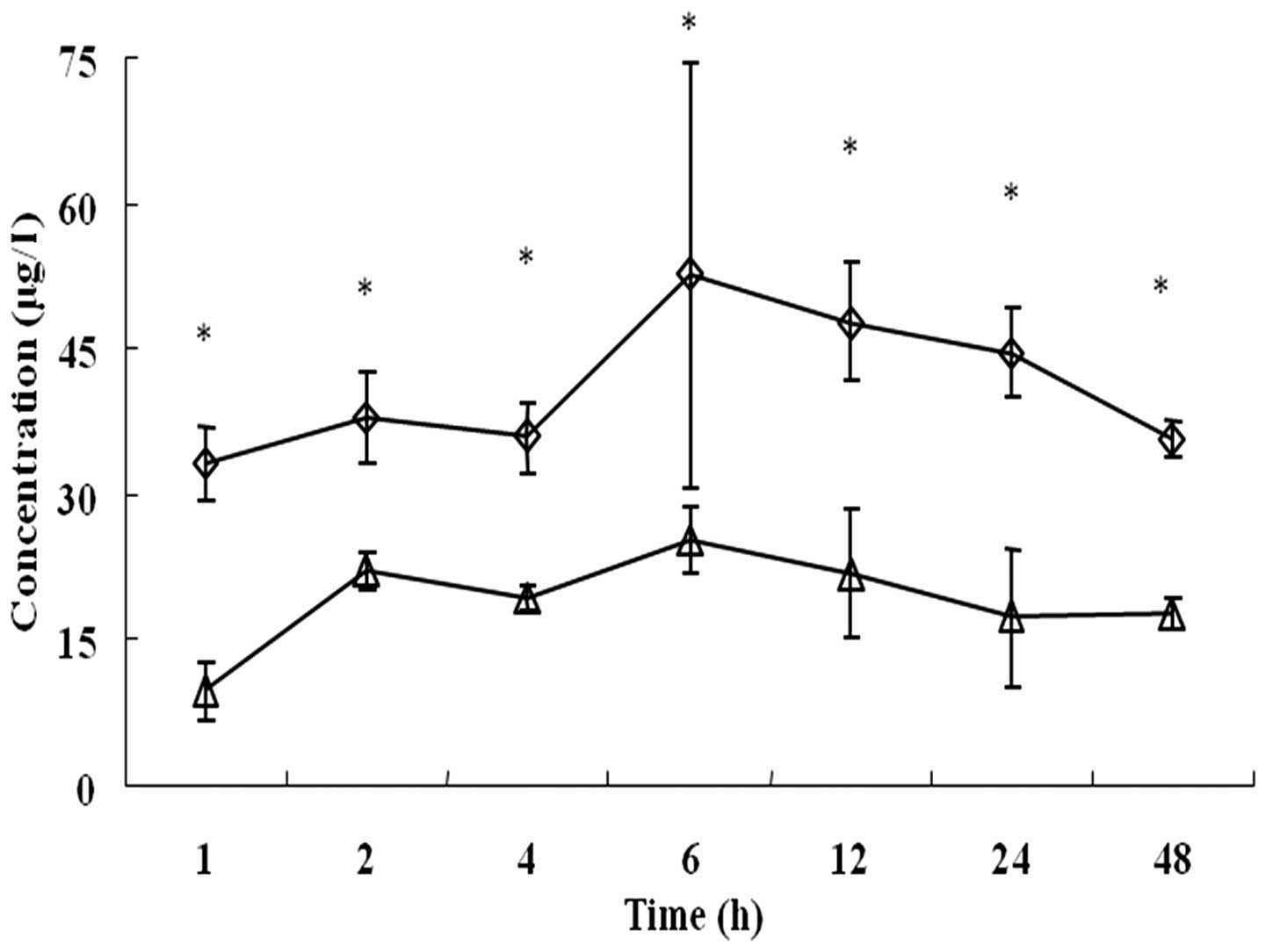|
1
|
Saleem A, Jackson A, Mukherjee S, Stones
N, Crosby T, Tait D and Price PACORRN UK Pancreatic Radiotherapy
Group: Radiotherapy in the management of unresectable locally
advanced pancreatic cancer: A survey of the current UK practice of
clinical oncologists. Clin Oncol (R Coll Radiol). 22:257–260. 2010.
View Article : Google Scholar : PubMed/NCBI
|
|
2
|
Siegel R, Naishadham D and Jemal A: Cancer
statistics, 2013. CA Cancer J Clin. 63:11–30. 2013. View Article : Google Scholar : PubMed/NCBI
|
|
3
|
Hidalgo M: Pancreatic cancer. N Engl J
Med. 362:1605–1617. 2010. View Article : Google Scholar : PubMed/NCBI
|
|
4
|
Braat H, Bruno M, Kuipers EJ and
Peppelenbosch MP: Pancreatic cancer: Promise for personalized
medicine. Cancer Lett. 318:1–8. 2012. View Article : Google Scholar : PubMed/NCBI
|
|
5
|
Chan A, Diamandis EP and Blasutig IM:
Strategies for discovering novel pancreatic cancer biomarkers. J
Proteomics. 81:126–134. 2013. View Article : Google Scholar : PubMed/NCBI
|
|
6
|
McAllaster JD and Cohen MS: Role of the
lymphatics in cancer metastasis and chemotherapy applications. Adv
Drug Deliv Rev. 63:867–875. 2011. View Article : Google Scholar : PubMed/NCBI
|
|
7
|
Yang F, Jin C, Subedi S, Lee CL, Wang Q,
Jiang Y, Li J, Di Y and Fu D: Emerging inorganic nanomaterials for
pancreatic cancer diagnosis and treatment. Cancer Treat Rev.
38:566–579. 2012. View Article : Google Scholar : PubMed/NCBI
|
|
8
|
Russell M and Anzai Y: Ultrasmall
superparamagnetic iron oxide enhanced MR imaging for lymph node
metastases. Radiography. 13:e73–e84. 2007. View Article : Google Scholar
|
|
9
|
Abdollahi A, Jangjoo A, Dabbagh Kakhki VR,
Rasoul Zakavi S, Memar B, Naser Forghani M, Mehrabibahar M and
Sadeghi R: Factors affecting sentinel lymph node detection failure
in breast cancer patients using intradermal injection of the
tracer. Rev Esp Med Nucl. 29:73–77. 2010. View Article : Google Scholar : PubMed/NCBI
|
|
10
|
Varghese P, Mostafa A, Abdel-Rahman AT,
Akberali S, Gattuso J, Canizales A, Wells CA and Carpenter R:
Methylene blue dye versus combined dye-radioactive tracer technique
for sentinel lymph node localization in early breast cancer. Eur J
Surg Oncol. 33:147–152. 2007. View Article : Google Scholar : PubMed/NCBI
|
|
11
|
Ogasawara Y, Yoshitomi S, Sato S and
Doihara H: Clinical significance of preoperative lymphoscintigraphy
for sentinel lymph node biopsy in breast cancer. J Surg Res.
148:191–196. 2008. View Article : Google Scholar : PubMed/NCBI
|
|
12
|
Noh YW, Kong SH, Choi DY, et al:
Near-infrared emitting polymer nanogels for efficient sentinel
lymph node mapping. ACS Nano. 6:7820–7831. 2012. View Article : Google Scholar : PubMed/NCBI
|
|
13
|
Agostinis P, Berg K, Cengel KA, Foster TH,
Girotti AW, Gollnick SO, Hahn SM, Hamblin MR, Juzeniene A, Kessel
D, et al: Photodynamic therapy of cancer: An update. CA Cancer J
Clin. 61:250–281. 2011. View Article : Google Scholar : PubMed/NCBI
|
|
14
|
Dolmans DE, Fukumura D and Jain RK:
Photodynamic therapy for cancer. Nat Rev Cancer. 3:380–387. 2003.
View Article : Google Scholar : PubMed/NCBI
|
|
15
|
Lovell JF, Liu TW, Chen J and Zheng G:
Activatable photosensitizers for imaging and therapy. Chem Rev.
110:2839–2857. 2010. View Article : Google Scholar : PubMed/NCBI
|
|
16
|
Issa MC and Manela-Azulay M: Photodynamic
therapy: A review of the literature and image documentation. An
Bras Dermatol. 85:501–511. 2010.(In English, Portuguese).
View Article : Google Scholar : PubMed/NCBI
|
|
17
|
Nishioka NS: Drug, light, and oxygen: A
dynamic combination in the clinic. Gastroenterology. 114:604–606.
1998. View Article : Google Scholar : PubMed/NCBI
|
|
18
|
Fan BG and Andrén-Sandberg A: Photodynamic
therapy for pancreatic cancer. Pancreas. 34:385–389. 2007.
View Article : Google Scholar : PubMed/NCBI
|
|
19
|
Brown SB, Brown EA and Walker I: The
present and future role of photodynamic therapy in cancer
treatment. Lancet Oncol. 5:497–508. 2004. View Article : Google Scholar : PubMed/NCBI
|
|
20
|
Celli JP, Spring BQ, Rizvi I, Evans CL,
Samkoe KS, Verma S, Pogue BW and Hasan T: Imaging and photodynamic
therapy: Mechanisms, monitoring, and optimization. Chem Rev.
110:2795–2838. 2010. View Article : Google Scholar : PubMed/NCBI
|
|
21
|
Abd-Elgaliel WR, Cruz-Monserrate Z, Wang
H, Logsdon CD and Tung CH: Pancreatic cancer-associated Cathepsin E
as a drug activator. J Control Release. 167:221–227. 2013.
View Article : Google Scholar : PubMed/NCBI
|
|
22
|
Anand S, Ortel BJ, Pereira SP, Hasan T and
Maytin EV: Biomodulatory approaches to photodynamic therapy for
solid tumors. Cancer Lett. 326:8–16. 2012. View Article : Google Scholar : PubMed/NCBI
|
|
23
|
Pawlik TM, Gleisner AL, Cameron JL, et al:
Prognostic relevance of lymph node ratio following
pancreaticoduodenectomy for pancreatic cancer. Surgery.
141:610–618. 2007. View Article : Google Scholar : PubMed/NCBI
|
|
24
|
Ni X, Yang J and Li M: Imaging-guided
curative surgical resection of pancreatic cancer in a xenograft
mouse model. Cancer Lett. 324:179–185. 2012. View Article : Google Scholar : PubMed/NCBI
|
|
25
|
Fidler IJ: Rationale and methods for the
use of nude mice to study the biology and therapy of human cancer
metastasis. Cancer Metastasis Rev. 5:29–49. 1986. View Article : Google Scholar : PubMed/NCBI
|
|
26
|
Tamada Y, Aoki D, Nozawa S and Irimura T:
Model for paraaortic lymph node metastasis produced by orthotopic
implantation of ovarian carcinoma cells in athymic nude mice. Eur J
Cancer. 40:158–163. 2004. View Article : Google Scholar : PubMed/NCBI
|
|
27
|
Schroder T, Chen IW, Sperling M, Bell RH
Jr, Brackett K and Joffe SN: Hematoporphyrin derivative uptake and
photodynamic therapy in pancreatic carcinoma. J Surg Oncol. 38:4–9.
1988. View Article : Google Scholar : PubMed/NCBI
|
|
28
|
Barrett AJ, Kennedy JC, Jones RA, Nadeau P
and Pottier RH: The effect of tissue and cellular pH on the
selective biodistribution of porphyrin-type photochemotherapeutic
agents: A volumetric titration study. J Photochem Photobiol B.
6:309–323. 1990. View Article : Google Scholar : PubMed/NCBI
|
|
29
|
Dougherty TJ, Gomer CJ, Henderson BW, Jori
G, Kessel D, Korbelik M, Moan J and Peng Q: Photodynamic therapy. J
Natl Cancer Inst. 90:889–905. 1998. View Article : Google Scholar : PubMed/NCBI
|
|
30
|
Alexiades-Armenakas M: Laser-mediated
photodynamic therapy. Clin Dermatol. 24:16–25. 2006. View Article : Google Scholar : PubMed/NCBI
|
|
31
|
Kilarski WW, Muchowicz A, Wachowska M,
Mężyk-Kopeć R, Golab J, Swartz MA and Nowak-Sliwinska P:
Optimization and regeneration kinetics of lymphatic-specific
photodynamic therapy in the mouse dermis. Angiogenesis. 17:347–357.
2013. View Article : Google Scholar : PubMed/NCBI
|
|
32
|
Taylor MJ, Hoerauf A and Bockarie M:
Lymphatic filariasis and onchocerciasis. Lancet. 376:1175–1185.
2010. View Article : Google Scholar : PubMed/NCBI
|
|
33
|
Padera TP, Kadambi A, di Tomaso E,
Carreira CM, Brown EB, Boucher Y, Choi NC, Mathisen D, Wain J, Mark
EJ, et al: Lymphatic metastasis in the absence of functional
intratumor lymphatics. Science. 296:1883–1886. 2002. View Article : Google Scholar : PubMed/NCBI
|
|
34
|
Wang R, Hao H, Wang G, Xie H, Xu M, Wang
W, He H and Li X: Pharmacokinetics, tissue distribution and
excretion of a new photodynamic drug deuxemether. J Photochem
Photobiol B. 90:179–186. 2008. View Article : Google Scholar : PubMed/NCBI
|














